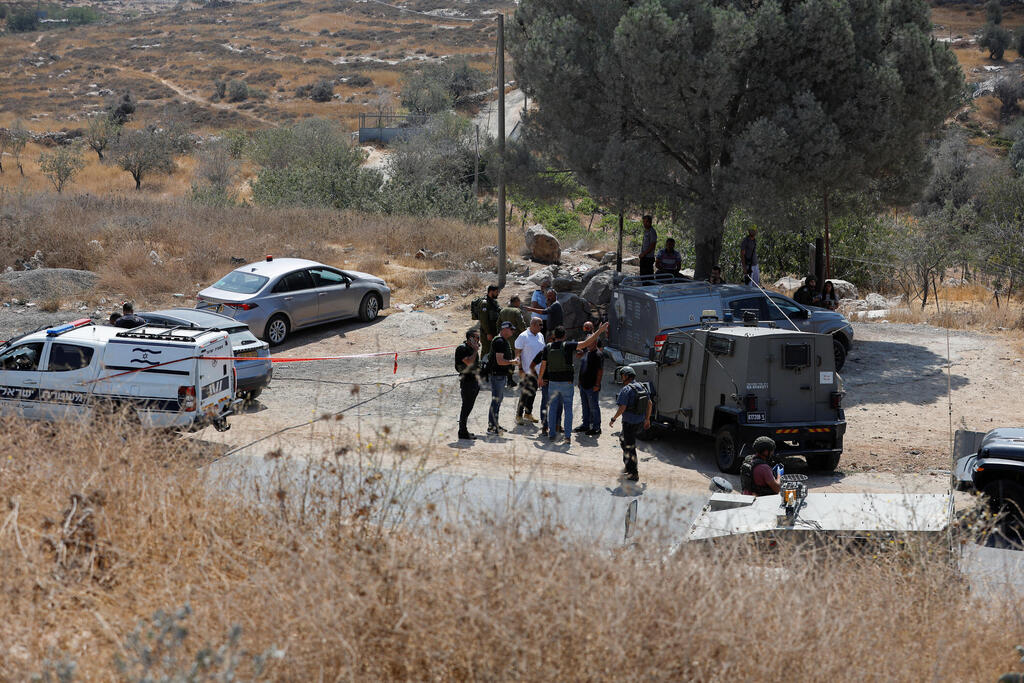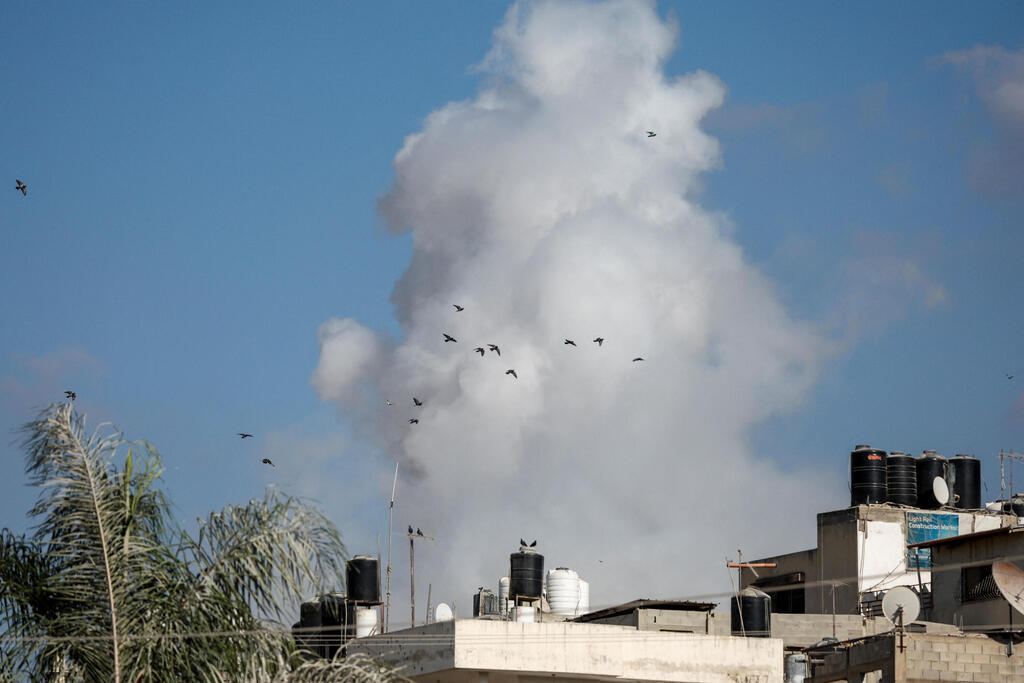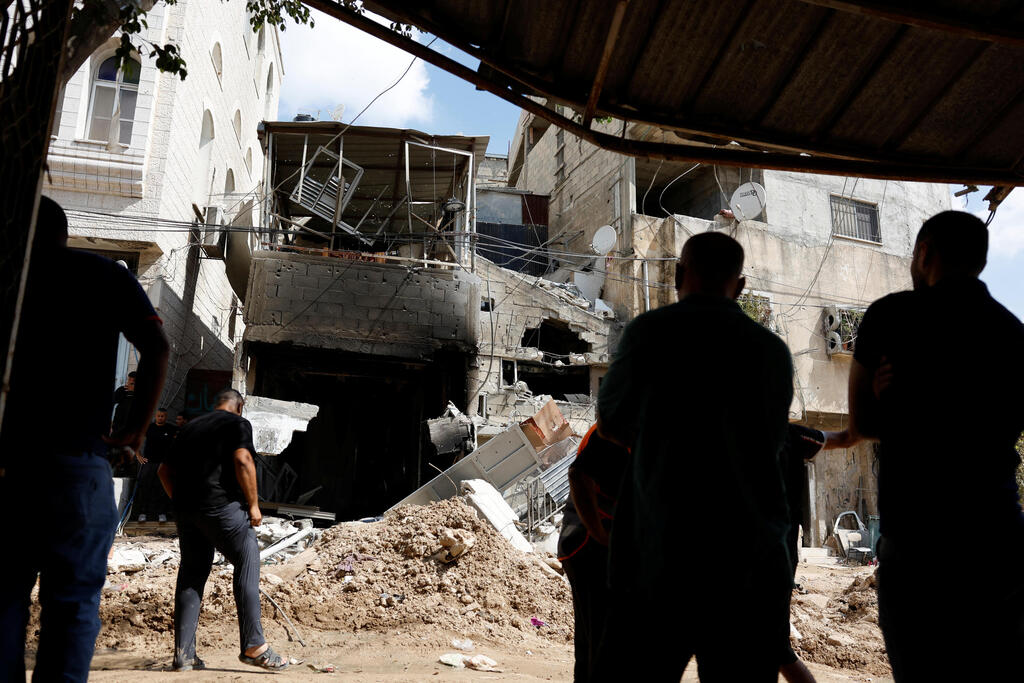Getting your Trinity Audio player ready...
The phenomenon of “terror battalions” operating in the northern West Bank, particularly in recent months in areas like Jenin and Tulkarm, has not yet spread to the region south of Jerusalem, including Hebron and the southern Hebron Hills.
Several factors contribute to this containment, primarily the pre-existing presence of Hamas, Islamic Jihad and even Fatah extremists in Jenin and Tulkarm long before the escalation on October 7, when Hamas called for assistance from Gaza as the IDF intensified operations there.
3 View gallery


Archival: Security forces at the scene of a terror attack on Road 60, West Bank
(Photo: Reuters/MUSSA ISSA QAWASMA)
This resurgence, which seemed subdued following the dismantling of the Lion's Den gang in Nablus and the IDF’s Operation House and Garden in Jenin, reemerged during the ongoing war.
The spread of this “smoldering intifada” to areas south of Jerusalem, especially Hebron, has been averted partly due to the Palestinian Authority’s stronger control in Hebron and surrounding towns, and the logistical difficulty of smuggling weapons into the central West Bank via the Dead Sea, compared to the easier access through the Jordan Valley into northern Samaria and Tulkarm.
The relative calm in the region south of Jerusalem has allowed the IDF to conserve forces and focus efforts on northern Samaria, the Jordan Valley and Tulkarm—areas where Iran has been able to smuggle weapons, and Hamas operatives in Turkey and Lebanon have channeled funds and directives, sometimes with Hezbollah's assistance, to sustain a high level of terrorist activity.
However, the nature of terrorism is fluid. Pressure in one area often leads to flare-ups in another connected region, which is currently the situation in the West Bank. The intense, continuous pressure that the IDF Central Command and the Judea and Samaria Division are exerting on refugee camps in Jenin, Nur Shams near Tulkarm, and Far’a in the Jordan Valley is pushing terror operatives to seek areas where the IDF presence is less concentrated, primarily conducting defensive and preventive arrest operations rather than large-scale offensive actions like those in northern Samaria.
It is crucial to determine whether the two car bombs that exploded Friday night in Gush Etzion are linked to northern Samaria, or if they stem from a local cell. The IDF must act accordingly based on this assessment.
3 View gallery


IDF strike during counterterrorism operation in Tulkarm and Jenin
(Photo: REUTERS/Mohammed Torokman)
This situation has significant implications for the IDF, which is stretched thin in terms of personnel and combat units. Currently, between 23 and 26 battalions and special units are deployed in the West Bank, forming task forces under local brigades.
The IDF must try to prevent a flare-up in the Hebron area to avoid redeploying additional forces—resources it does not have—to the West Bank. Such a shift would undermine the IDF's ability to conduct ground operations in Gaza and, if necessary, in Lebanon.
The national security establishment must now increase vigilance and security measures in communities south of Jerusalem, intensify patrols on main routes and urgently secure the separation barrier, which is particularly vulnerable in the southern Hebron Hills.
The burden of preventing a wave of terrorism south of Jerusalem and in the Hebron area falls primarily on the Shin Bet and Military Intelligence. Their success in swiftly arresting inciters and preventing the smuggling of weapons from northern Samaria to areas south of Jerusalem is crucial for maintaining control.
The economic situation in the West Bank remains dire—people are not working in Israel, the Palestinian Authority is not paying salaries and its security forces are not operating at full capacity.
This environment is ripe for unrest, exacerbated by Israel withholding funds from the Palestinian Authority. The Hebron area, including Gush Etzion and the southern Hebron Hills, is home to a predominantly religious and dispersed population.
The area around Bethlehem hosts several large refugee camps where terrorist cells could organize, similar to those in Jenin. Preventing the flow of weapons into these camps—something the IDF and Shin Bet have struggled to achieve along the porous Jordanian border from the Dead Sea to the Sea of Galilee—is critical.
It is expected that Iran, along with Hamas operatives abroad in Turkey, Lebanon and the "West Bank Command" remnants in Gaza, will now attempt to shift the focus of this "smoldering intifada" to the area south of Jerusalem.
Should they succeed, the IDF may find itself fighting on two active fronts, and possibly a third. Given the ongoing low enlistment among ultra-Orthodox communities, this could present a significant challenge.
Moreover, if the terror campaign spreads south of Jerusalem, it could spill over into Israel proper, beyond the Green Line. Therefore, the fight must now focus on all aspects fueling the terrorism—ranging from arresting and thwarting key operatives to eliminating external handlers, with a particular emphasis on preventing the smuggling of weapons and funds into the Hebron, Bethlehem and southern Hebron Hills areas.



